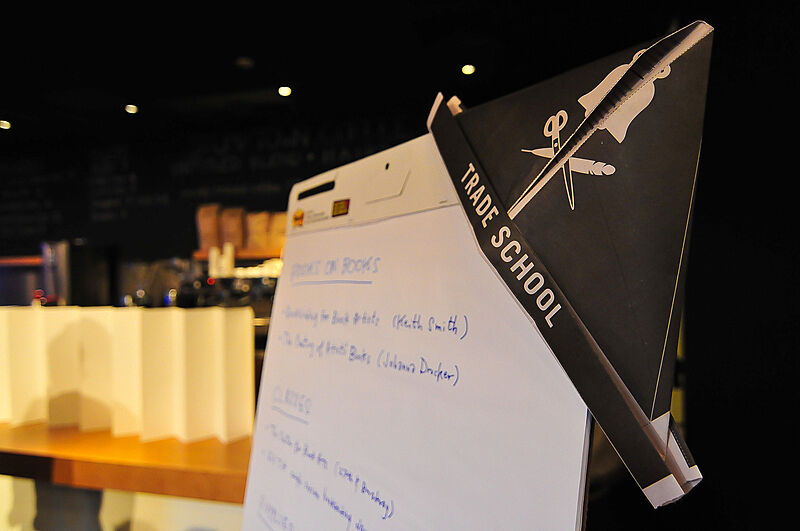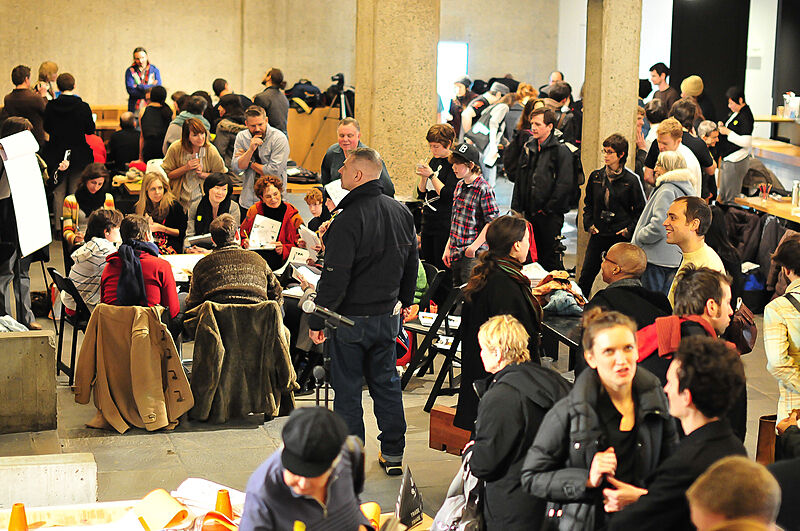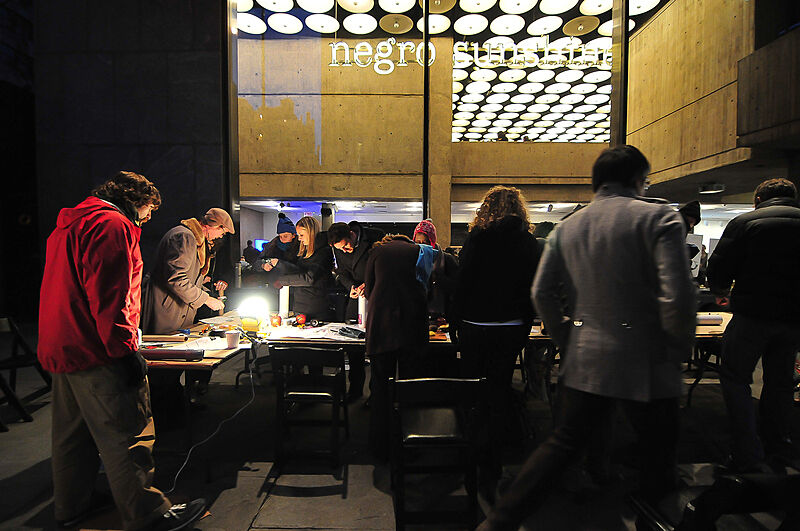Trade School at the Whitney: A Coincidence of Wants
Jun 10, 2011
On typical Friday evenings, admission to the Whitney is “pay-as-you-wish,” but on March 25, certain visitors presented a more tangible form of payment. For the public program Trade School at the Whitney: A Coincidence of Wants, participants brought objects of their own creation in exchange for enrollment in one of sixteen quirky courses held simultaneously throughout the Museum. The curriculum varied wildly but all of the courses were based on creative and artistic themes.
Once visitors dropped off their barter items (which ranged from framed photographs to homemade beet muffins), they gathered in the Whitney’s Lower Gallery, waiting for the first class bell to ring. In one small corner, students huddled around philosophy professor Dena Shottenkirk, who examined plumbing techniques through a philosophical lens in “Philosophy of Plumbing from Kant to Kierkegaard.” Meanwhile, within earshot, 10-year-old Quinn Accardi taught “Comics and Cartooning for Everyone” to twenty students, some more than fifty years his senior.
From “Pilates in a Chair” in the bustling lobby, to “Elevator Reanimation: The Brain and the Experience of the Divine,” a philosophy course that began—where else?—in the Whitney’s enormous lift, each course sought to engage and activate the interstitial spaces of the Museum. Some courses, like “Present-Time Feng Shui,” directly employed the Whitney’s renowned Breuer building, teaching students how to clear energy and spaces while walking down the staircase, while others, such as “Monday Painter/Sunday Banker” navigated the economic space of art and commerce.
As the final bell rang, instructor Amy Whitaker presented her last PowerPoint slide. Its quotation by Adam Smith proved an apt end to an evening of bartering, learning, and creative commerce within the walls of an evolving institution: "A work of art is a new thing in the world that changes the world to allow itself to exist."
By Emily Arensman, Coordinator of Public Programs



